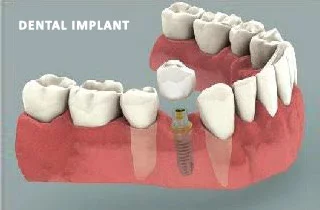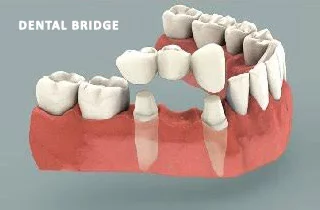Are you thinking about getting a dental bridge or implant, but do not know which solution would be the best in your case? Both systems can replace a missing tooth, but are completely different methods. However, it is important to fill a tooth gap with either a dental bridge or an implant. This article will answer the following questions: 
- Which is better, a bridge or an implant?
- Can I switch from bridge to implant?
- So, which one should you choose?
Which is better, a bridge or an implant?
Whether a dental bridge or a dental implant is better depends on your specific situation — both have pros and cons.
What is a dental implant? – modern, permanent solution
A dental implant is an artificial tooth root made of a biomaterial, which is placed in the gap left by a lost tooth or by a tooth that, for some reason, had to be removed. The dental implant will support the carefully planned tooth replacement. The material of dental implants is usually pure, unalloyed titanium. Even if you have an allergy to certain metals, there is no reason for concerns. The human body accepts titanium completely.
What are the advantages of implants?

- Lasts longer (15–25+ years or lifetime)
- Preserves jawbone (prevents bone loss)
- Doesn’t affect neighbouring teeth
- Feels and functions like a natural tooth
- Easier to clean (like a regular tooth)
The disadvantages of implants
- More expensive initially. More about dental implants costs
- Requires minor surgery
- Healing time: 3–6 months for full integration
- Not ideal if you have insufficient bone (without grafting)
What is a dental bridge? – faster, more affordable option
A dental bridge consists of two or more connected crowns. One or two of them literally bridge a gap or also two gaps. The crowns at the two ends of a bridge are supported by natural teeth or dental implants. Typically, a dental bridge is permanently screwed in or cemented. If telescopic crowns are used as anchors, the dental bridge can also be removable.
What are the advantages of a dental bridge?

- Faster (often completed in 1–2 weeks)
- Cheaper upfront cost. More about dental bridge cost
- Non-surgical
What are the disadvantages of dental bridge?
- Requires grinding down adjacent healthy teeth
- Doesn’t prevent bone loss under missing tooth
- Shorter lifespan (typically 5–15 years)
- Harder to clean under the bridge
Can I switch from a bridge to an implant?
When switching from a bridge to an implant is possible
You may be a good candidate if:
- You’re in good general and oral health
- You have enough bone volume at the site
- The adjacent teeth are still healthy and stable
- You want a more permanent, independent solution
What needs to be considered
| Factor | Explanation |
|---|---|
| Bone Health | A bridge doesn’t stimulate the bone, so over time, the bone under the missing tooth may shrink. If there’s a significant loss, a bone graft may be needed. |
| Bridge Removal | The existing bridge must be carefully removed. If the adjacent teeth were shaved down for crowns, They may need to be restored separately. |
| Gum Condition | Healthy gums are essential for implant placement and healing. |
| Healing Time | Implants typically require a healing period (osseointegration) of 3–6 months before placing a crown. |
So, which one should you choose?
| If You… | Better Option |
|---|---|
| Want a long-term solution | Implant |
| Have healthy teeth nearby | Implant |
| Have multiple missing teeth | Bridge or implant-supported denture |
| Want to avoid surgery | Bridge |
| Have budget limitations | Bridge (short-term), Implant (investment) |
| Have bone loss | Bridge or Implant with bone graft |

